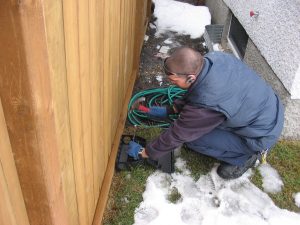1) How do rodenticides work?
Most domestic rat and mouse poisons are anticoagulants; they affect the rodent’s blood, reducing the ability of blood to clot so that exposed rodents bleed internally and die.
2) How long does it take before they die?
Rodents that have ingested a lethal dose of single feed anticoagulant bait will die in 4-6 days.
3) What happens after they die?
A dead rodent in a warm environment is going to decay and as a result, and may leave an odour. In some cases, you may find the carcasses in the vicinity of their nest. However, nobody can guarantee that dead rodents will die in an accessible location. The use of anticoagulant baits accelerates their decomposition and consequently produces less odour.
4) Do place packs have to be opened?
No, because rats and mice can smell the bait through the bag and will have no problem eating through the pouches.
5) Can I touch the bait?
All rodent baits can be safely handled but always wash your hands with soap and water after handling rodent baits.
6) Are other animals or birds at risk from eating dead carcasses?
The amount of rodenticide that is required to kill a rat or mouse is quite minimal and rodenticides are not very toxic to larger animals. An animal would likely have to eat dozens of mice or rats in a short period of time to ingest enough active ingredient to make them sick. The carcasses dry up quickly becoming very unappealing but it is important to pick up dead carcasses immediately to avoid any possibility of secondary poisoning.
7) Is one feeding enough?
- Diphacinone (Ditrac, Tomcat) requires multiple feedings over several days before a lethal dose is consumed. It is important to provide a continuous supply of bait if you are using this type of rodenticide.
- Bromodialone (Contrac, Hawk) and Brodificoum (Final, Jaguar) are single feed rodenticides that will kill warfarin resistant rats and mice in one feeding. However, they may continue to consume bait for several days afterwards and bait supply should be continuous to ensure all rodents have an opportunity to feed.
8) How do I keep rodent baits away from children & pets?
Bait stations are the ideal device to add safety to rodent control. They are extremely durable, tamper resistant and can even be anchored to ensure they will not be picked up or moved. There are also many types of effective traps to consider instead of baits. Place the bait stations under stoves, dishwasher and behind fridges.
9) What is the best way to bait?
Begin baiting as soon as you detect a problem. Place bait in areas where you notice or suspect rodent activity, that is, where rodents will find it. Mice tend to travel only 10-30 feet from their nest, while a rat’s home range is 100-150 feet from the nest. Be sure to keep bait fresh and dry, and dispose of any old or contaminated bait. Check the bait station at least once a week and replenish bait as required.
10) Where should I place baits, bait stations, or traps?
Place bait stations and traps where there are signs of heavy rodent activity. (feces, chew marks, urine stains, hair, scratching and/or squeaking sounds at night). Placement will usually be against a wall and out of reach of children, pets, and non-target animals. Rats and mice have limited vision so they always follow lines such as walls.
11) Why use glueboards?
Glueboard traps are non-toxic. Capture results are clearly visible and disposal is quick and easy.
12) I used the bait: Why do I still have rodents?
- It can take up to 10 days to kill rats or mice.
- Many rats and mice have developed a resistance to warfarin. Switch to a single feed anticoagulant rodenticide.
- Not enough bait was used. Rat and mice infestations can be very large (almost always larger then you would expect – rarely just one). Continue to refill the bait station as long as they are eating the bait as it may take time to reduce the population.
- Rodents can and will move pellets to another location and cache the bait. Switch to a single feed anticoagulant block bait that will be ingested right inside the bait station.
- Clean up areas where rats and mice live and breed and remove other all other food sources.
- To ensure that new rodents are not gaining access make sure all small openings around your house and foundation are sealed especially around pipes, wires, windows, and doors.
- Rats and mice love clutter and hate open spaces. Basements, storage areas, and garages often become rodent havens due to accumulated boxes, furniture, and collectables. Clean and organize these areas as soon as possible if you see signs of rodent activity.
]

